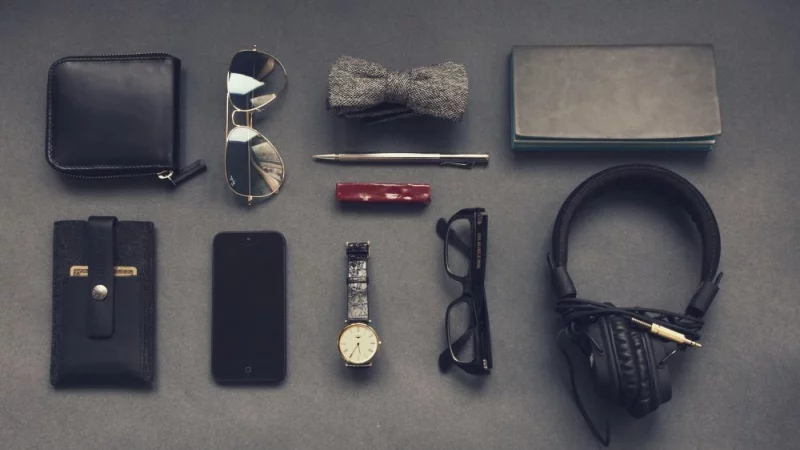
You’ve made it through the application essays, the challenging interviews, and yes, finally, you have secured your place at business school! But as your first semester approaches, a thought may cross your mind: How should you dress in business school?
In the business world you are usually required to dress a certain way, but, just like every company and every type of business occasion has its own norms, so too does every business school.
In fact, each school has its own culture—and dress is one way this culture is expressed. On top of that, how you dress is one way that your culture, values, and aspirations are expressed! Ideally, what you are looking for is a fit between the two – somewhere where you can feel and look like the business professional you want to be, and where that persona will be exactly what the school welcomes.
Below, we address some of the essentials of how to dress in business to school, but to home in on your personal strategy, you need to consider the culture of your business school. To find out where you fit, you can use MBA Cultural Fit. In less than ten minutes, it will identify your values and match them with different business school cultures. It takes into account whether the school encourages a more traditional style of self-presentation or a more relaxed approach—among many other factors. After all, you want to make a good first impression on your peers and professors, right? There are ways you can remain true to your own style and signal your career goals at the same time.
Research the program guidelines
The first thing you should do is go online and look up the guidelines, regulations, or general dress code for your academic program. Even if your classes are online, you may need to dress formally for the occasional video conference call or in-person meeting with your cohort. Many business programs have information about their dress code or a downloadable PDF document detailing the dos and don’ts of business-appropriate fashion.
There are three main types of dress code that you should be aware of (if you aren’t already), before going to business school: business professional, business casual, and casual. You've probably heard these terms before, but let’s unpack them fully. Of course, every school determines its own rules, and religious clothing is also permitted in most cases even if it strays from the guidelines.
The most conservative type of business attire is business professional. A lot of business schools require this dress code but not all the time. It looks great in any business setting and will make you look more presentable. It is also referred to as "business formal."
For women, this can mean a business suit with a skirt or pants, or an appropriate dress and jacket. Professional dress for men consists of a business suit or blazer, dress pants in a matching color, and a tie. Wearing darker, neutral colors are advised: they are more forgiving, flatter most complexions, and do not show perspiration. You might be required to dress business professional when attending networking events, presentations, and other more formal events.
Most business schools require business casual as an everyday dress code. Although business casual attire is a more relaxed version of business professional, it does not imply that you will be "casual.”
Business casual attire includes a collared shirt and/or sweater, khakis or dress pants, and nice shoes for women. Women can also wear a medium-length dress or skirt (knee-length or longer). Business casual attire for men includes a polo shirt, button-down shirt with long or short sleeves and a collar, and/or a sweater, khakis or dress pants, and dress shoes. There is no tie required.
Although it is business "casual," it is critical that you appear more business-like than casual. Many people confuse business casual with casual dressing, but it still means dressing fairly formally. Business casual is not as formal or buttoned-up as professional dress, but it is also not as casual as campus casual.
These are your everyday outfits like jeans, T-shirts, sportswear, and sneakers. This type of attire is probably not the best idea for class or if you are going to an event. The phrase “dress for the part you want to play” holds true in this case. If you want your peers and professors to take you more seriously, you might want to choose your moments for the casual look carefully.
Dressing casually is an excellent way to connect with fellow students in less formal settings outside of school. You'll feel more at ease when you talk, and your conversations will flow much more smoothly.

The school’s dress code guidelines are just that—guidelines. Usually, a more business professional environment can enhance the image of a certain institution, but it is not an enforced look. Ultimately, the choice is yours. Some people prefer a more classical style and others a more liberal, just like some schools recommend a more formal look and others embrace a good casual fit. This difference can even be a contributing factor when you are choosing a business school. (And for that we recommend you try MBA Cultural Fit!)
Despite significant changes in business attire rules in both "business" and "business casual" dress environments, there is still a critical question: What about particular cultural and religious styles? Can these styles, which include sarees and salwar kameez ensembles worn by many South Asian women, dreadlocks and braids worn by African diasporas, and turbans worn by certain Sikh men, among others, be worn in university without criticism, and even with approval? It is a question that must be asked, given that many professionals are unwilling—and in some cases, unable—to comply with typical corporate dress codes due to religious and cultural beliefs.
For example, in the US, the Religious Freedom Restoration Act (RFRA) was passed by Congress in 1993. It was intended to provide stronger protections for individual rights to religious freedom, and to have these protections apply at the federal, state, and local levels. Many of these laws include the right to freely wear religious attire.
Finding the perfect cut of pant, skirt, blazer, or blouse can be difficult, and some clothing brands simply do not make the perfect fit for your specific body type. For petite or full-figured men and women, getting the perfect fit may require some additional tailoring, so don't be afraid to find a tailor you trust.
And here is an idea for a sustainable choice: you can use suits that have been passed down to you by your family, get them second-hand, vintage, or thrift them. This will save you a lot of money, will look just as good, and you can always get them tailored to fit you perfectly.
Although clothing can sometimes define you, it is the accessories that will set you apart from the crowd and leave a lasting impression on peers and professors. Even a more casual business outfit can be dressed up with accessories to make you look and feel good. Also, putting on a good belt, a nice vintage pocket square or even a freshly polished pair of shoes can make a big difference.
If you carry a briefcase, backpack, or another type of bag, upgrading your old one to a new satchel or purse may set you apart from your peers in your degree program. Maintaining your accessories in a good condition is just as important as having them. Take the time to clean and polish your staple accessories to not only keep you looking fashionable but also to make them last longer and withstand the test of time.
Try to look at your time in business school as a chance to dress for who you hope to be after this transformative experience.


Comments